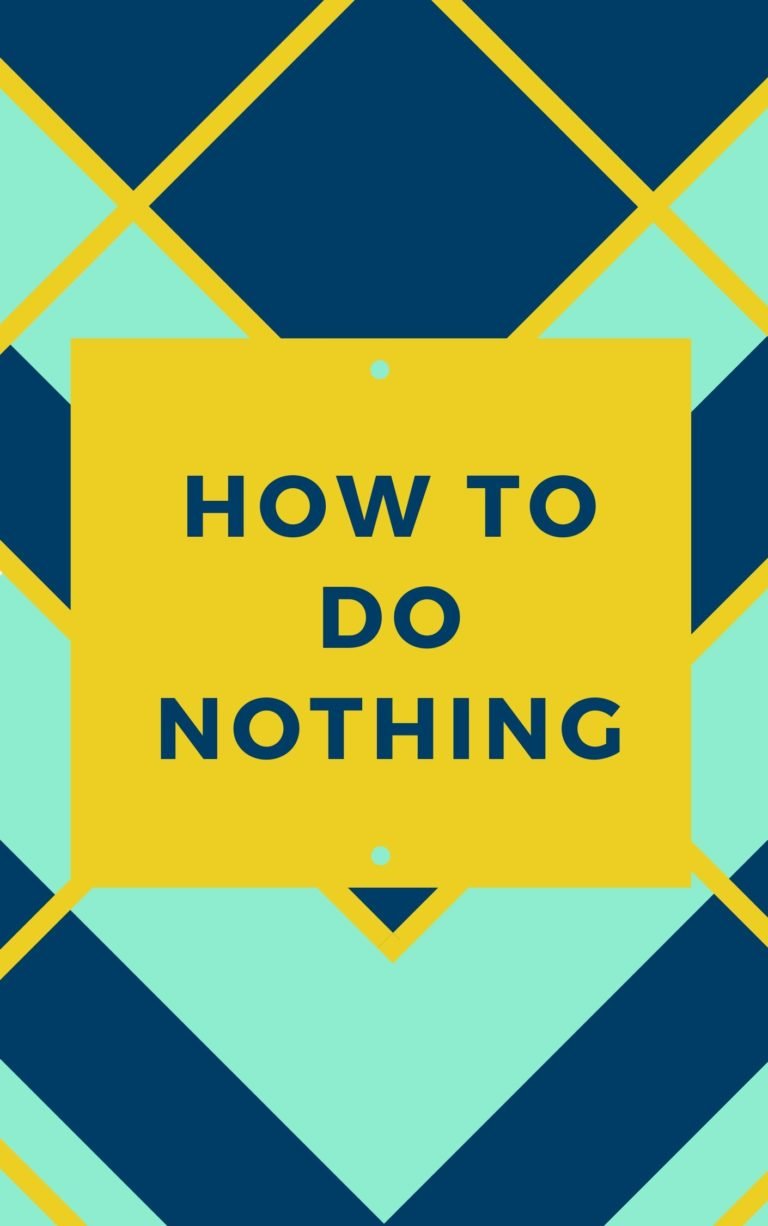The Advice Trap
Michael Bungay Stanier
Rating: 9.0
“The Advice Trap is superbly written, a very quick and enjoyable read, but most importantly it will develop you into a far more influential leader.”
-Thomas A. Kolditz, PhD; Brigadier General, US Army (ret); Director, Doerr Institute at Rice University
Contents
Advice Monster
Most of the advice people give is worthless, but their inner “Advice Monster” insists on giving it anyway. You – and everyone else – possess an internal advice monster who loves to give advice at every opportunity. Unfortunately, most of it is useless – or even destructive.
“You ask advice: Ah, what a very human and very dangerous thing to do.”
American journalist Hunter S. Thompson
Giving advice is as basic to the human condition as enjoying community over solitude or happiness over sadness. The advice monster believes that best thing in the world is for you to know you have the “best answer” for someone’s issues and to share it. The advice monster insists you are delivering value. It’s how you maintain control and tamp down your natural qualms about failure. You could be delivering good advice, but, like most people, you usually don’t for two reasons:
- You address the wrong issue – In any conversation, it’s natural to solve the first issue that surfaces. This is where most people focus their advice. But the first issue that pops up usually isn’t the real problem. Continue to listen and probe. To redirect your advice monster, ask a question instead of giving advice.
- Your suggested solution is mediocre – Your solution likely won’t help because, again, like most people, you’re dealing with insufficient information in an “ocean of assumption.”
Advice is bad
Advice giving is bad for the advice giver, the advice receiver, the team and the organization. Unsolicited advice often results in four negative consequences:
- “It demotivates the advice receivers” – When someone else tells you what to do, your natural reaction is that the advice giver doesn’t value you as someone who can think for himself or herself. Advice givers often strike at your autonomy.
- “It overwhelms the advice givers” – Your already busy life becomes even more hectic. You must plan your own affairs as well as someone else’s.
- “It compromises team effectiveness” – Thanks to everyone’s advice monsters, teams become assemblies of “demotivated receivers and overwhelmed givers.” Team members then have difficulty focusing on the business at hand.
- “It limits organizational change” – Amid today’s rapid change, organizations can no longer rely on old formulas and static processes to stay on top of their work. The “status quo of hierarchy” is inadequate to meet today’s abrupt challenges.
The advice monster presents itself to you as three different personas. Its loud “Tell-It” personality whispers in your ear that you have the answer to any problem and should share it broadly. Tell-It’s primary principle is, “I know best.” The “Save-It” personality is less boisterous and more egotistical. It says everything will crumble unless you save the day. The “Control It” personality is a big manipulator. It signals that giving away control is disastrous and you must be in charge.
Be a coach
Learn to shut down your advice monster and become more like a coach.. Suppressing your advice monster – and becoming “more coach-like” in your basic approach – is the right tactic, but it can be hard to implement. To use it effectively, make the transition from “Present You” to “Future You.” Your present you is like a child; it denies you nothing. It offers your present self immediate gratification. Your future self is an adult who lets you put off immediate feel-good rewards for substantial, lasting rewards in the future.
“You don’t need a new app; you need a new operating system.”
Bringing the advice monster under control requires self-reflection. Consider four factors:
- “Who let the dogs out?” – What activates your advice monster? Figure that out in advance to avoid triggers, like situations, events and people that push you into advice-giving mode.
- “Confessions” – Hold a mirror up to yourself. When something lights you up, what do you do? What specific actions does your advice monster pursue?
- “Prizes and punishments” – Everything you do has benefits and costs. Determine which benefits you like and earn them; identify which costs you dislike and avoid them. “Future you” will face the penalties for the advice monster’s mistakes.
- “Future you for the win” – The positive awards that accrue when you shut down your advice monster include your personal development. Future you will have three admirable qualities: “empathy, mindfulness and humility” – the defining attributes of great coaches.
Quality coaching requires developing a “coaching habit.”
To change your advice-giving orientation, develop a coaching habit. What makes coaches great isn’t their advice but, rather, their thoughtful nature, natural curiosity and ability to listen.
Quality coaching adheres to three principles: “Be lazy, be curious” and “be often.” When you are lazy, you listen instead of jumping in instantly to give advice.
What counts in coaching isn’t outcomes; it’s the coaching processes themselves. Quality coaching follows three principles:
- Be lazy – Don’t always immediately try to solve other people’s problems. Step back. Stand down and relax.
- Be curious – The curious, listening, thoughtful, reflective and wise coach anchors any conversation. The advice monster unsettles people and makes them feel nervous and inferior.
- Be often – Don’t confine your coaching orientation and behavior to coaching conversations. Use the principles of good coaching in all your interactions and communications, including during meetings and when writing emails and text messages.
Ask seven types of questions: “kickstart, AWE, focus, foundation, strategy, lazy” and “learning.”
Great coaching depends on asking bedrock questions you can use in any order, context or combination – whichever works best, depending on the situation.
“You can be known as the person who helps articulate the critical issue or as the person who provides hasty answers to solve the wrong problem. Which would you prefer?”
The seven questions are:
- “The kick-start question: What’s on your mind?” – This provides the initial curiosity to jump-start any conversation.
- “The AWE question: And what else?” – This is the handiest question in your coaching arsenal. It helps you uncover what’s affecting someone down deep.
- “The focus question: What’s the real challenge here for you?” – The first challenge someone mentions is never his or her true challenge.
- “The foundation question: What do you want?” – This helps you discover what actions will become necessary.
- “The strategy question: If you’re saying yes to this, what must you say no to?” – The strategy rests on selecting among your options and weighing the opportunity costs.
- “The lazy question: How can I help?” – The alternative to this question is, “What do you want from me?” When you ask it, remember that it’s not your job to rescue anybody.
- “The learning question: What was most useful or valuable here for you?” – Learning doesn’t happen when you tell someone something you know. It occurs when the other person puts two and two together.
Help identify challenges
Instead of giving advice, help people identify their challenges. You can’t determine someone’s real challenges if you depend on “Foggy-fiers” – that is, those awkward conversational approaches that fog your vision and lead away from dealing with real concerns. Beware six pitfalls:
- “Twirling” – The first words someone says never hit the true challenge.
- “Coaching the ghost” – The person you’re coaching keeps focusing on some other person or situation – the ghost. This is merely a distraction.
- “Settling” – Don’t collude in timidity. “Push back” to get to the real issue.
- “Popcorning” – You ask, “What’s on your mind?” The other person comes back with a string of multiple, facile answers: “Pop” and then, “PopPop.” Before you know it, you hear a litany of problems: “PopPopPopPopPopPop!” Help the other person skip the tangents to discover the real problem.
- “Big-picturing” – Generalities and summaries don’t contribute to helpful coaching conversations. Get to specifics.
- “Yarning” – The other person tells a dramatic, pointless story. Help uncover the core issue.
When you spot a fog creator, identify it. Be explicit about what you are and aren’t learning from your conversation with the other person. Ask a focus question. Apply adroit questioning, active listening, common sense and careful reflection to help someone identify their true challenges. Expect one of two responses when you succeed:
- Your friend or colleague sees the light and is ready to charge ahead. He or she thinks, “When can I get out of this conversation, so I can actually get going?”
- The other person is happy to be in touch with the real problem but has no idea what to do. You can ask, “We seem to have found the real challenge…Now, how can I help?” When the person offers an idea, ask the AWE question: “And what else?”
Being a coach
Good coaches are generous, vulnerable and studious. Develop coaching skills through regular practice and repetition.
“Coaching is the act of staying curious. Feedback is when you need to share your point of view.”
Follow four tips to master your coaching habit:
- “Be generous” – Great coaches wisely practice “generous silence.” During any conversation, but especially during a coaching discussion, great coaches periodically remain silent so the other person can speak freely and easily. The silence needs to last only three to five seconds. Quality coaches exhibit “generous transparency” by being candid about the coaching process and “generous appreciation” by showing that they value the other person.
- “Be vulnerable” – Great coaches are humble and open to being coached themselves. They acknowledge that they have much to learn and are willing to give up control. When quality coaches accept coaching, they are honest about their failings.
- “Be a student” – The more knowledge, both practical and theoretical, you gain about coaching and related topics, the better a coach you will become. Learn from leading experts. Concentrate on the best teachers: authors and academics, top executives, and TED presenters. Read Marshall Goldsmith’s works on coaching and Whitney Johnson’s Disrupt Yourself.
- “Be an advice giver” – Now that you understand why you must pause before offering advice, remember that the point is to give worthy guidance.
Follow four specific strategies to give sound advice:
- “Define it” – Give your advice when the other person is ready to hear it, not before.
- “Diminish it” – Qualify your advice by prefacing it with a disclaimer, such as “Here’s my best guess…” or “I may be wrong…” Don’t project the attitude that your advice is great just because it comes from you.
- “Deliver it” – When you offer advice, be prompt, quick and courageous.
- “Debrief it” – After you suggest an idea, ask, “Does this give you what you were looking for?”
“Your job is to make your coaching an everyday interaction.”
To keep people in the conversation, use the “TERA Quotient.” TERA stands for:
- “Tribe” – Demonstrate that you and the other person are together on the issue in question. Use the words “we” and “us.”
- “Expectation” – Forecast small milestones for the future to help the other person to address the human need for predictability.
- “Rank” – In any conversation, the parties want to know who is more important. Do your best to raise up the other person or team.
- “Autonomy” – People want a direct say in what happens to them. Signal that they have options. That’s why the foundation question – “What do you want?” – is so powerful.
Present to Future
Move past the myopic “Present You” to become the sagacious “Future You.”. Extend yourself and become the fully realized future you. This will transform how you lead others.
“The best advice comes from people who don’t give advice.”
Actor Matthew McConaughey
Besides creating a new you, you might be transforming or leading your team, or even becoming an integral component of a new organization. Take three steps:
- develop your coaching habit
- don’t get tangled up in the “advice trap” and
- shut down your advice monster for good.





husband says wears well